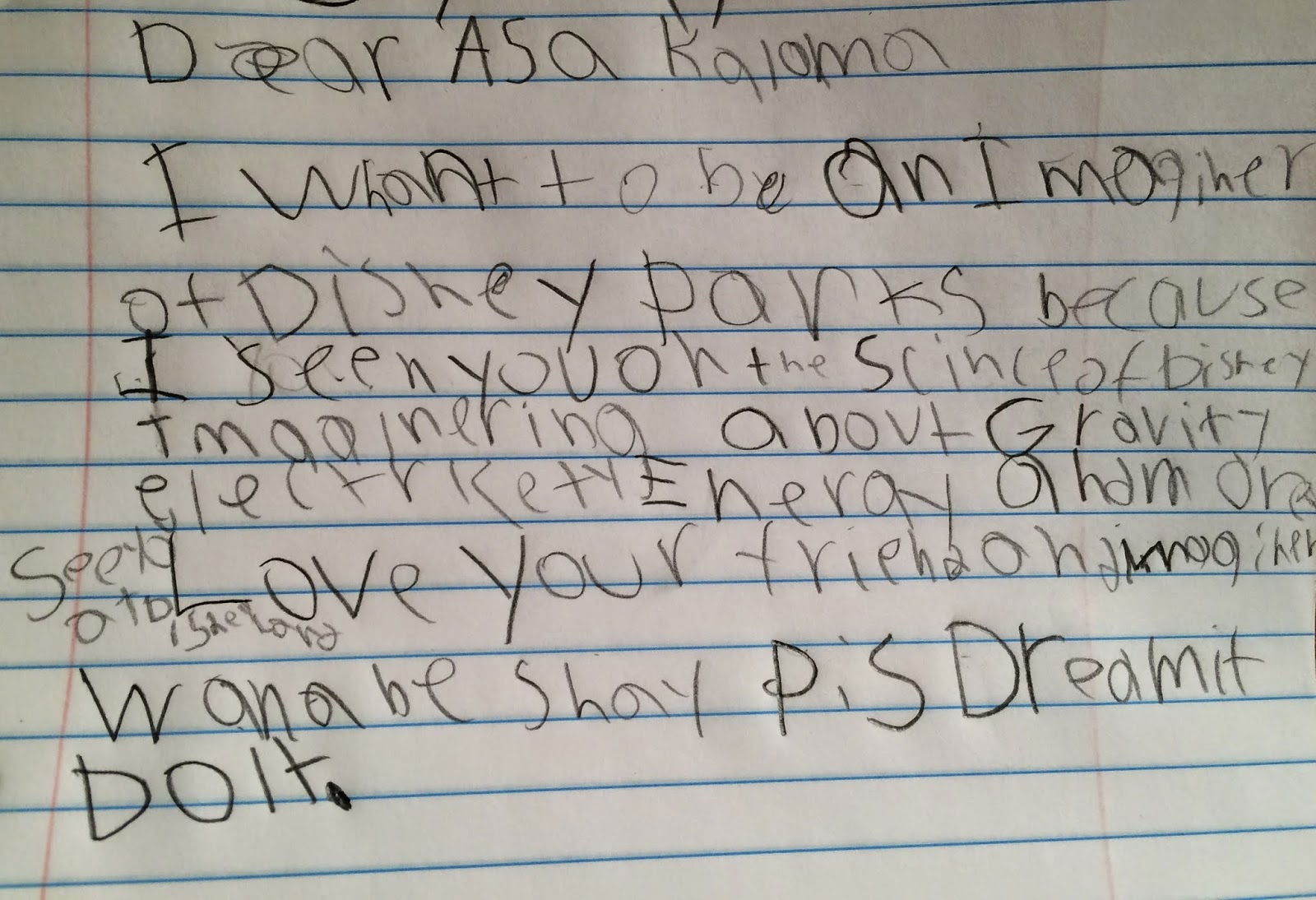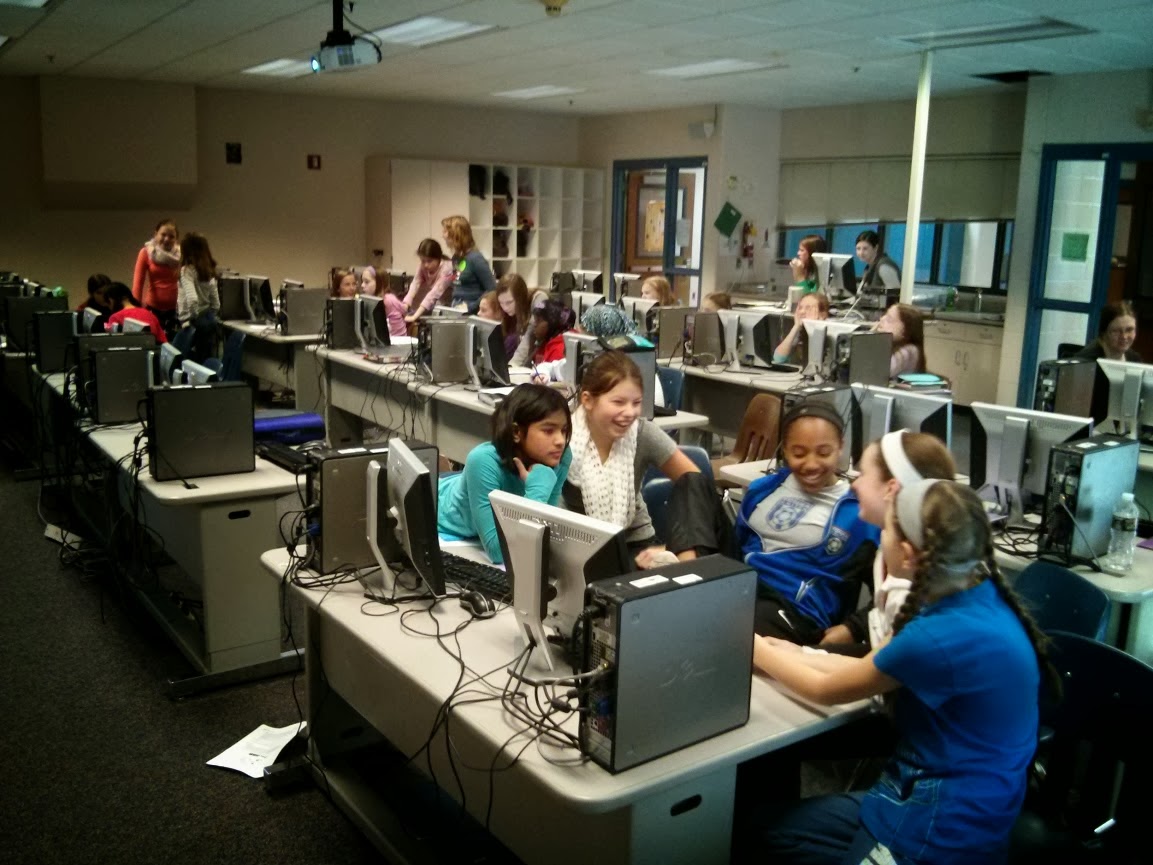This is an open letter to Asa Kalama, a Disney Imagineer, host of a fabulous video series, and one of my son's personal heroes. (He's right up there with Bill Nye the Science Guy, Neil deGrasse Tyson, and Mythbusters.) We would love to get the chance to meet him in person, so I'm turning to the Inter-tubes to try to catch his ear.
If you happen to have Mr. Kalama in your LinkedIn or Facebook contacts, or know of some other circuitous way to contact him, please forward him this blog post. We would be very grateful.
Sincerely,
The hopeful father of a future Disney Imagineer
Dear Mr. Kalama,
When we first told my 9 year old son Shay that we were taking a road trip to Disneyland this July, the first thing he asked was "Can we meet Asa?”
When we first told my 9 year old son Shay that we were taking a road trip to Disneyland this July, the first thing he asked was "Can we meet Asa?”
Asa.
He then sat down and wrote you a letter (see below -- along with a "translation”) telling you how much he loves your The Science of Disney Imagineering videos, and how much he has learned from them. (In fact, they’re a hit with the whole family.)
I suppose this reaction shouldn't have been such a surprise, because whenever Shay is asked “What do you want to be when you grow up?" he immediately replies “A Disney Imagineer!” This started when he first saw your videos at the age of 6, and he is now 9 years old...his answer has never wavered.
Shay is on the Autism Spectrum, and it would make this once-in-a-lifetime trip even better if we could take you to lunch, ask you lots of science questions, and maybe get some pictures and an autograph.
Thanks for making science fun and engaging, and for inspiring my son. We wish you every success!
Dear Asa Kalama,
I want to be an Imagineer of Disney Parks because I saw you on the Science of Disney Imagineering about gravity, electricity, energy, and more.
See you at Disneyland!
Love your friend and Imagineer Wanna Be, Shay
P.S. Dream it, do it.





